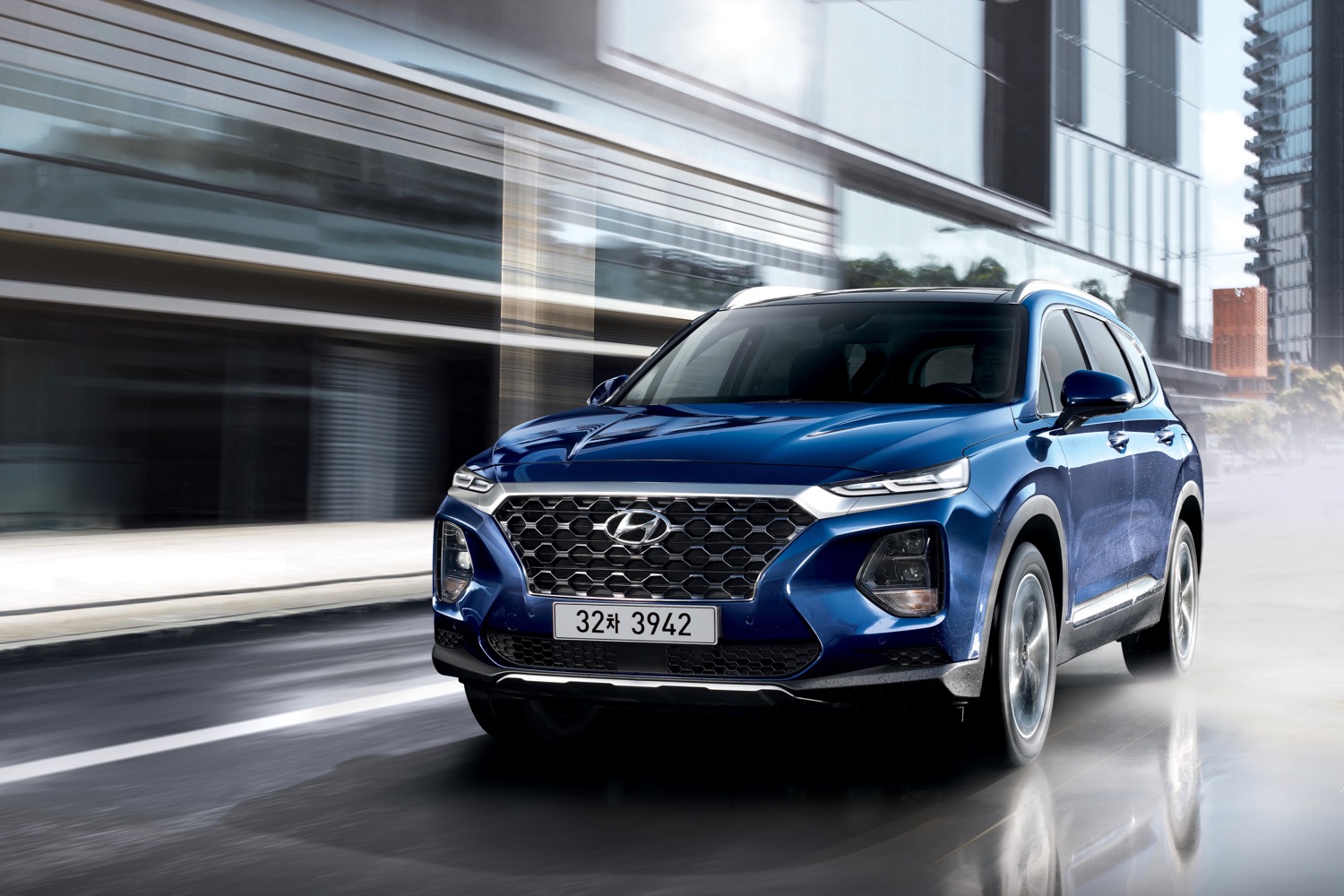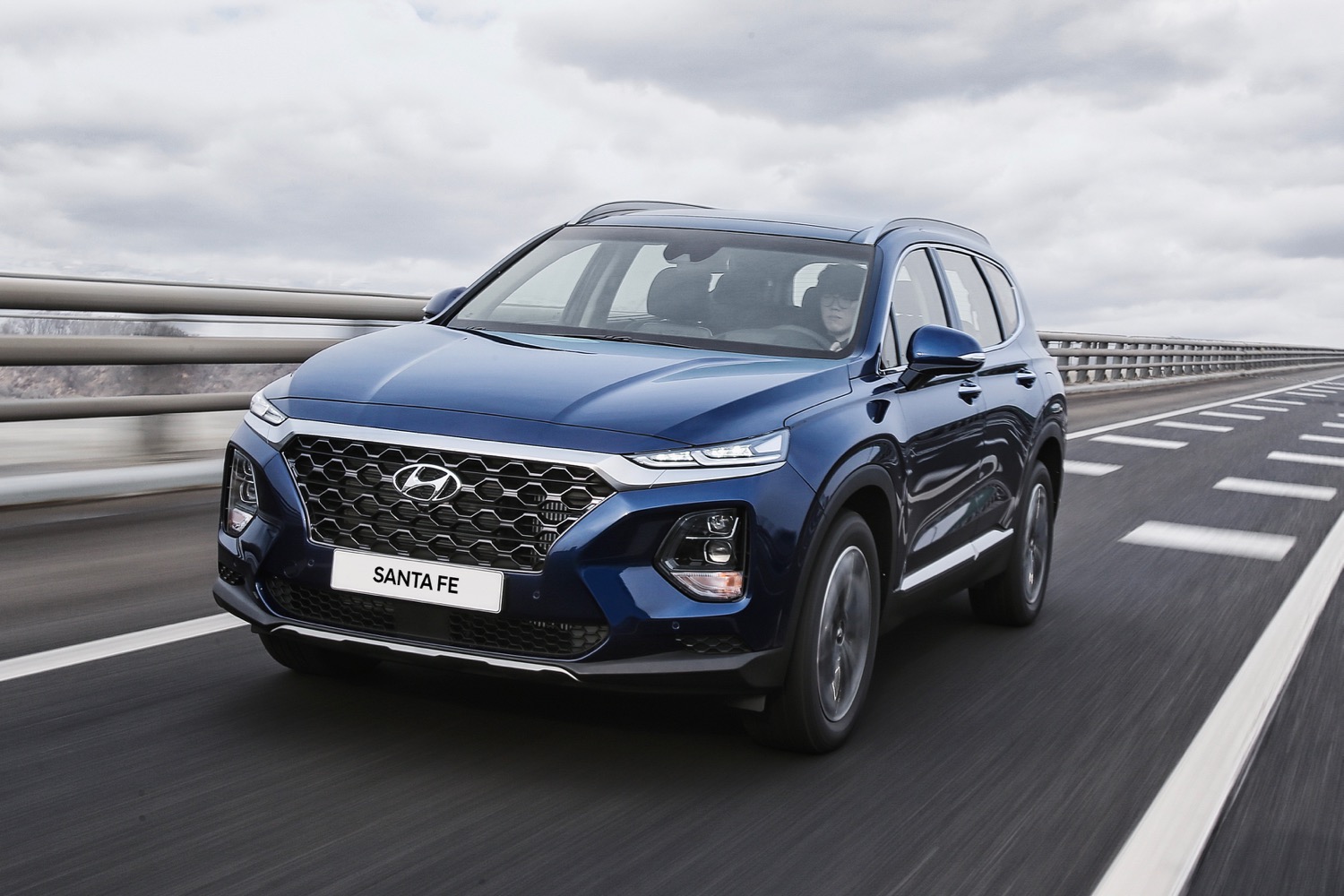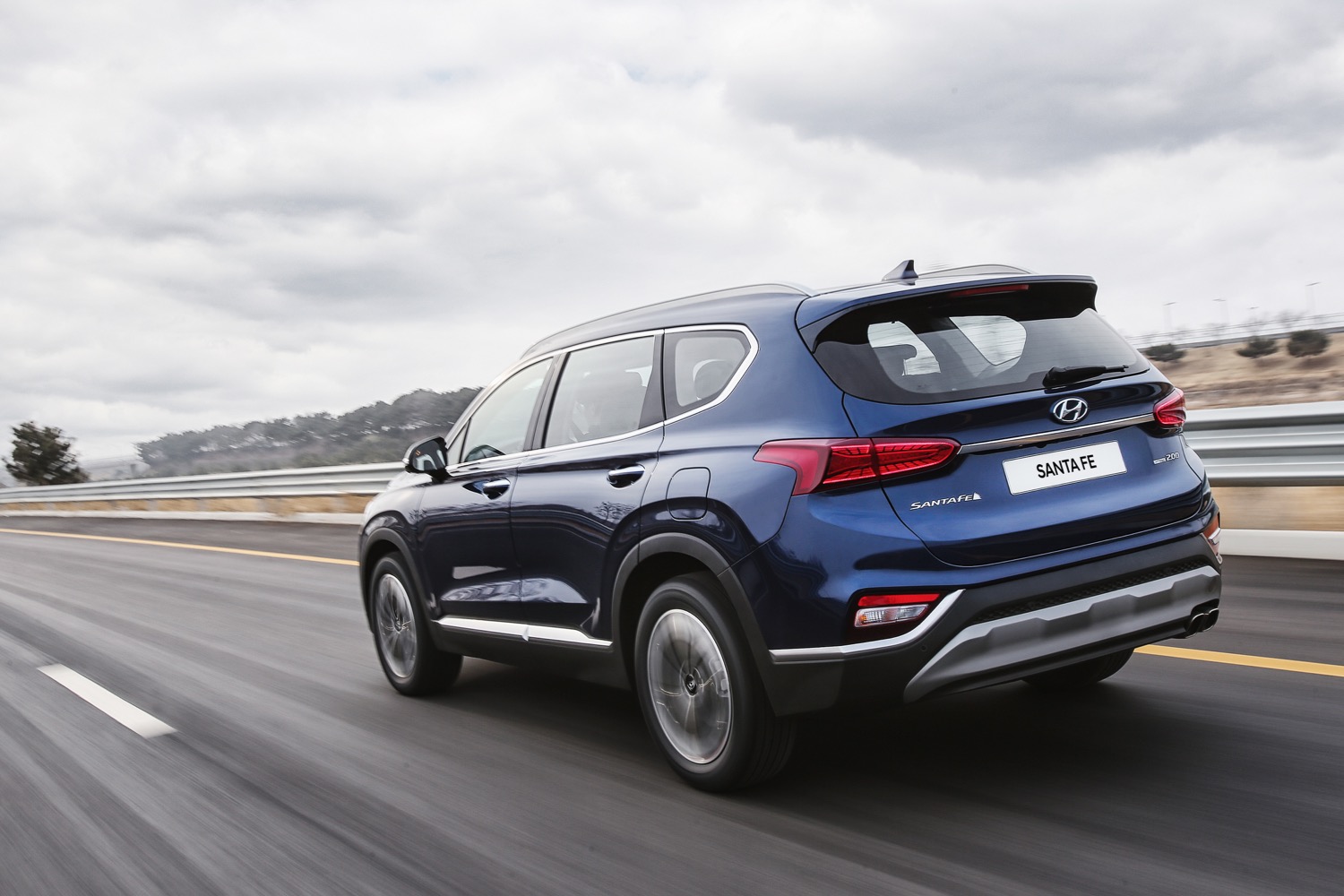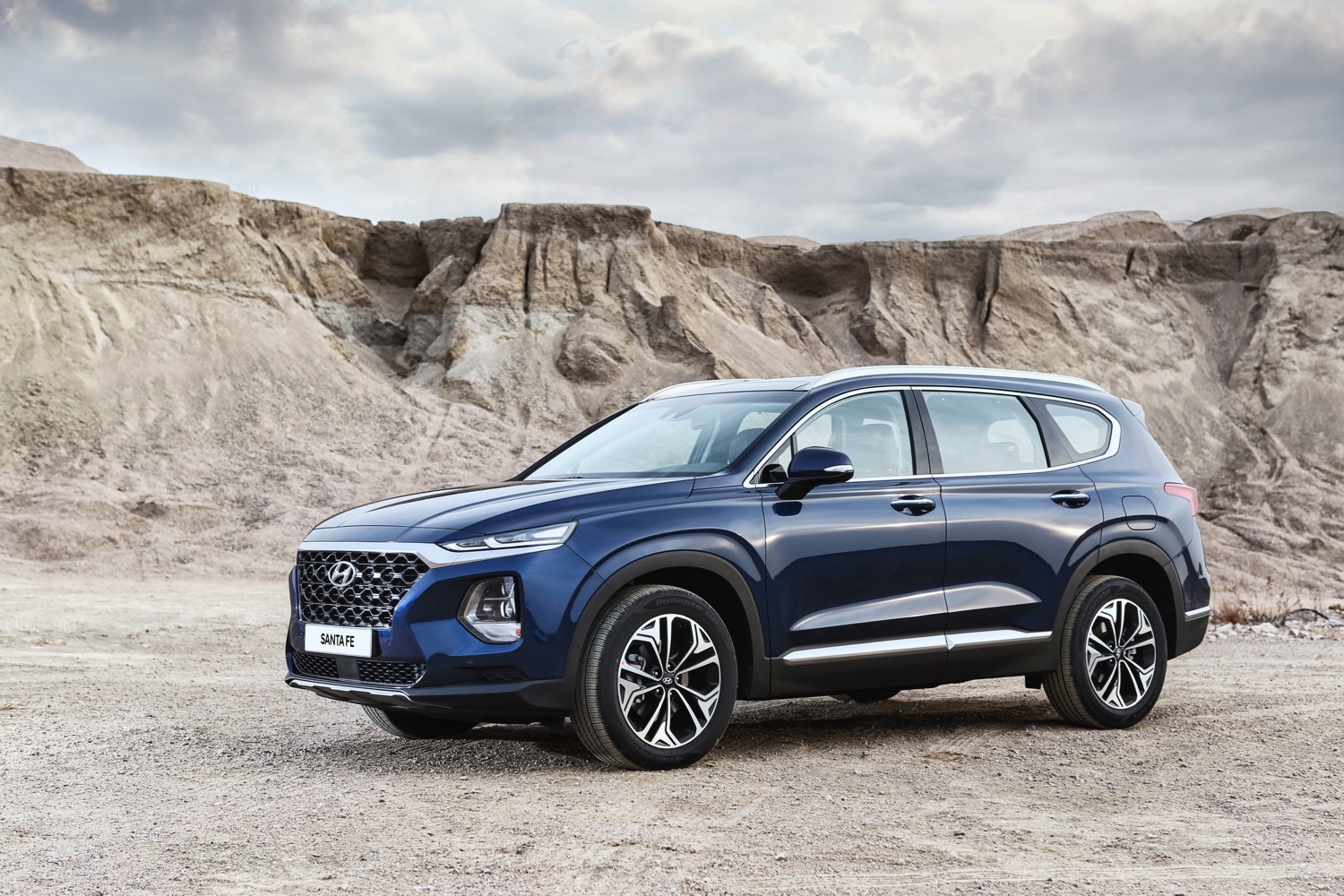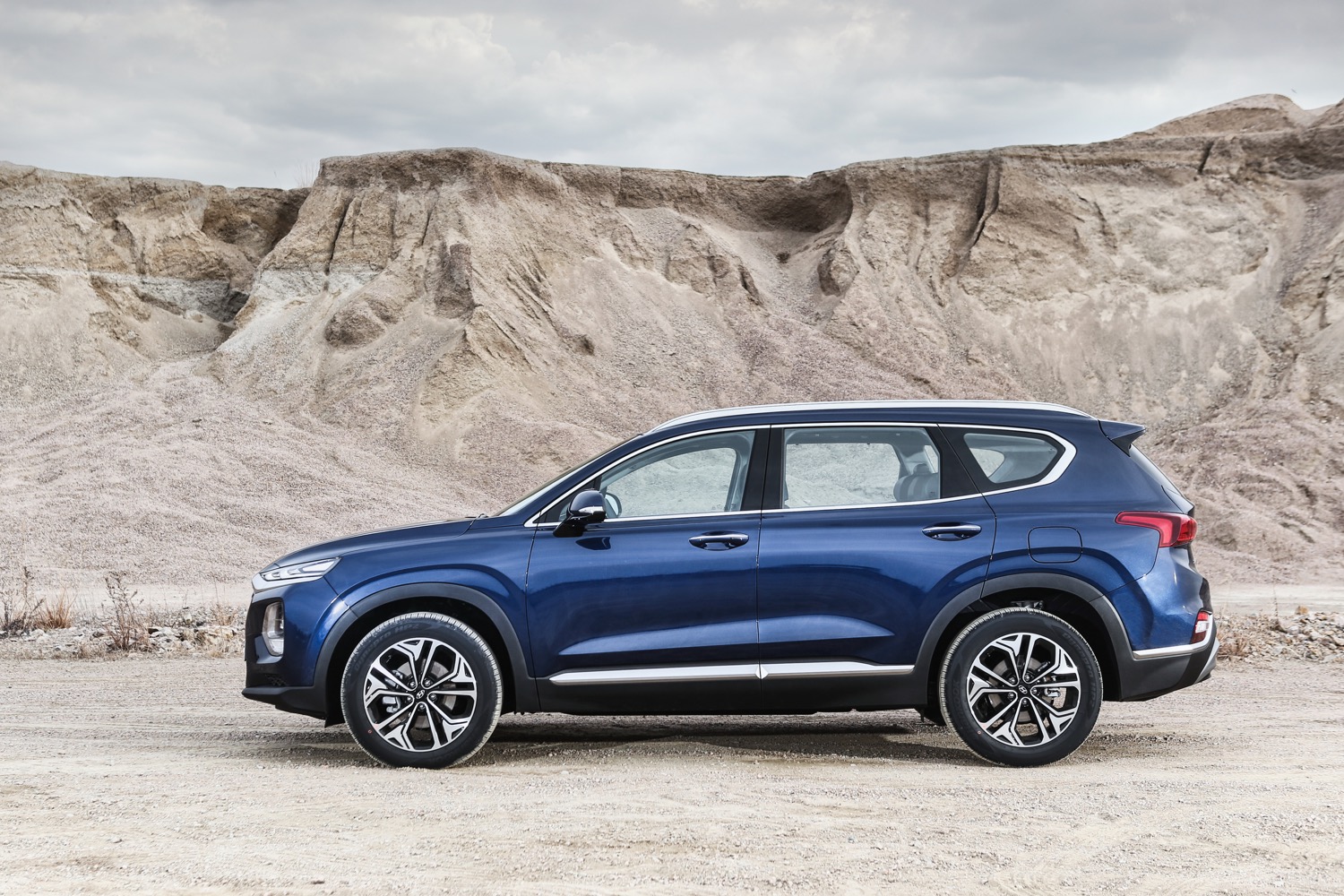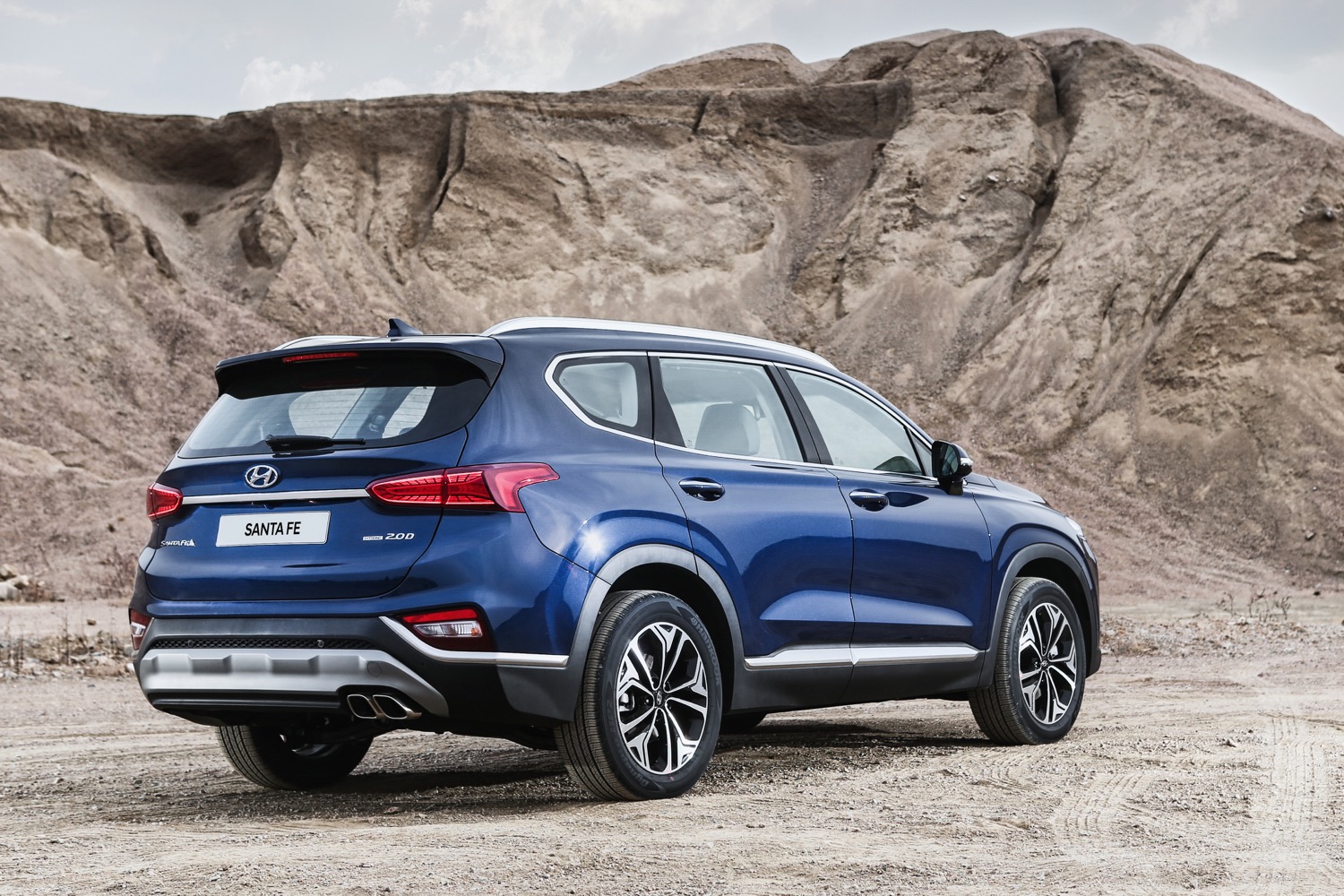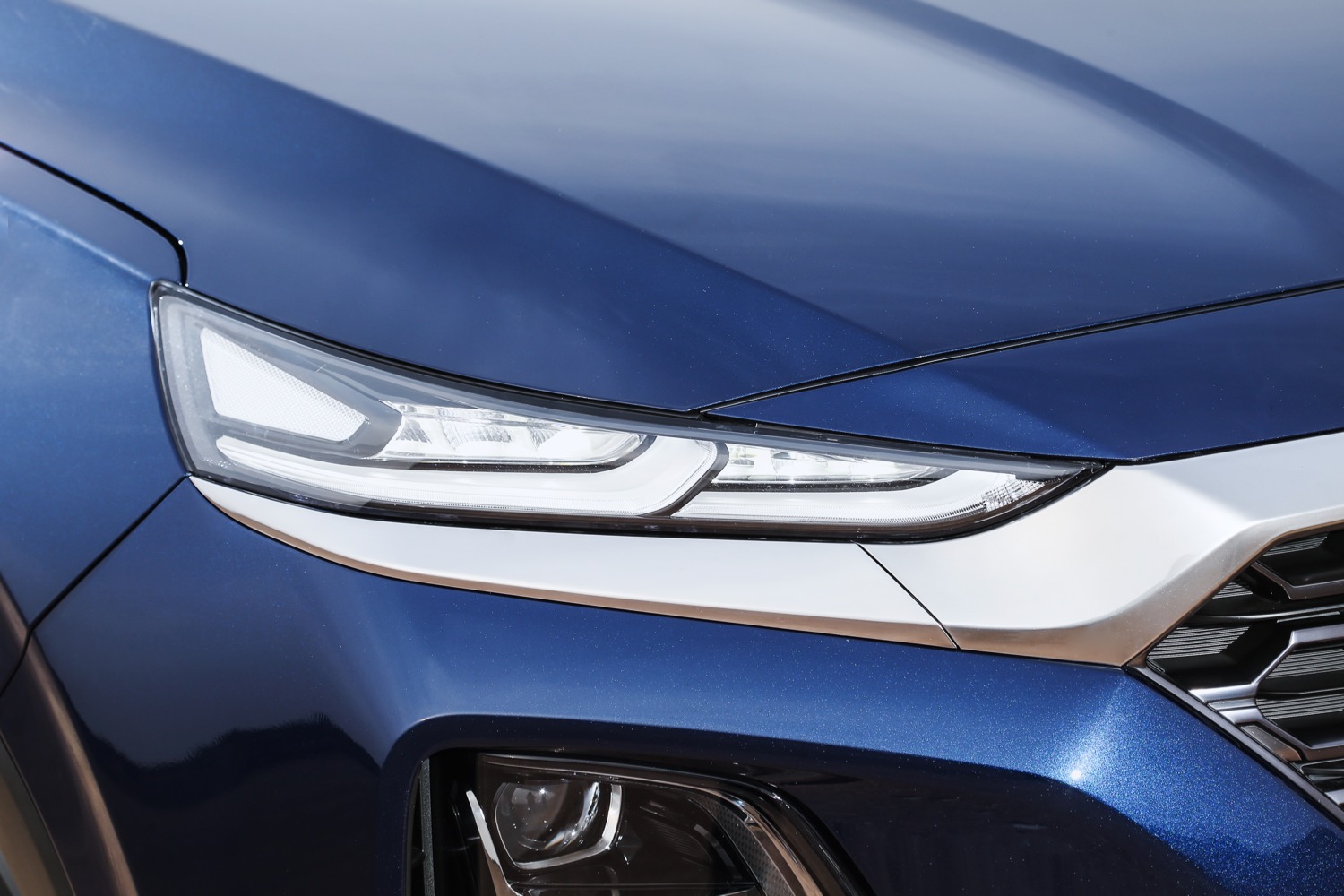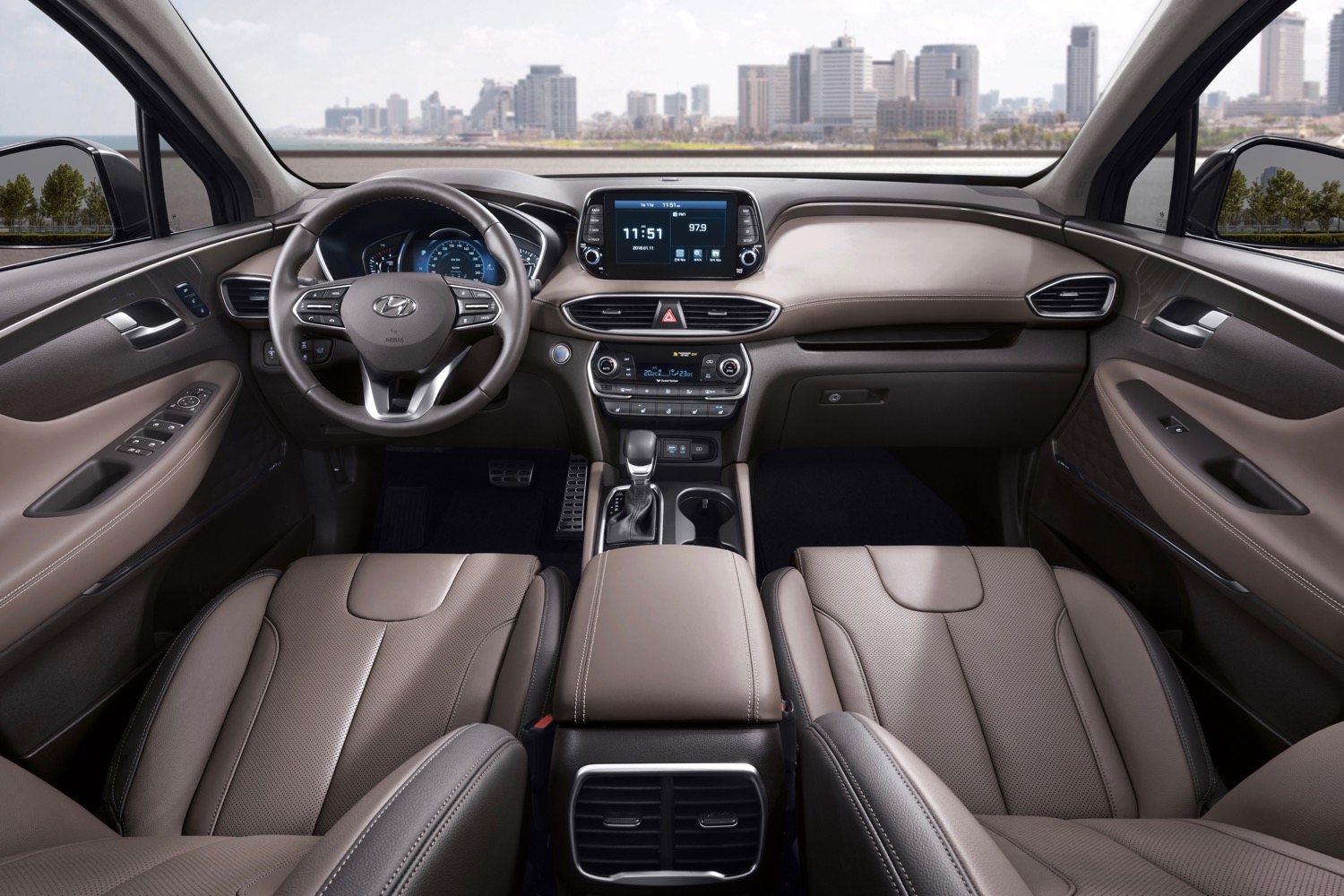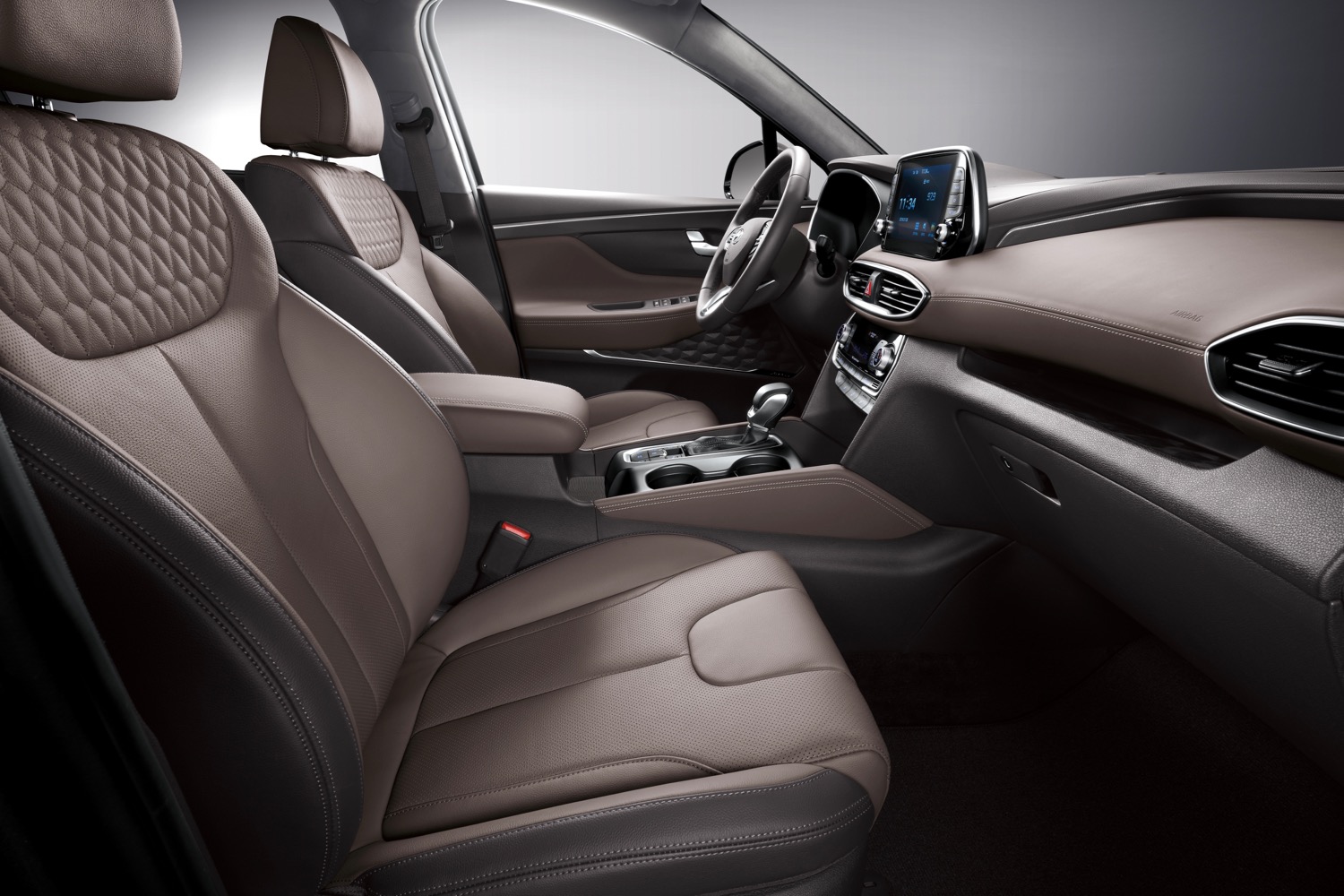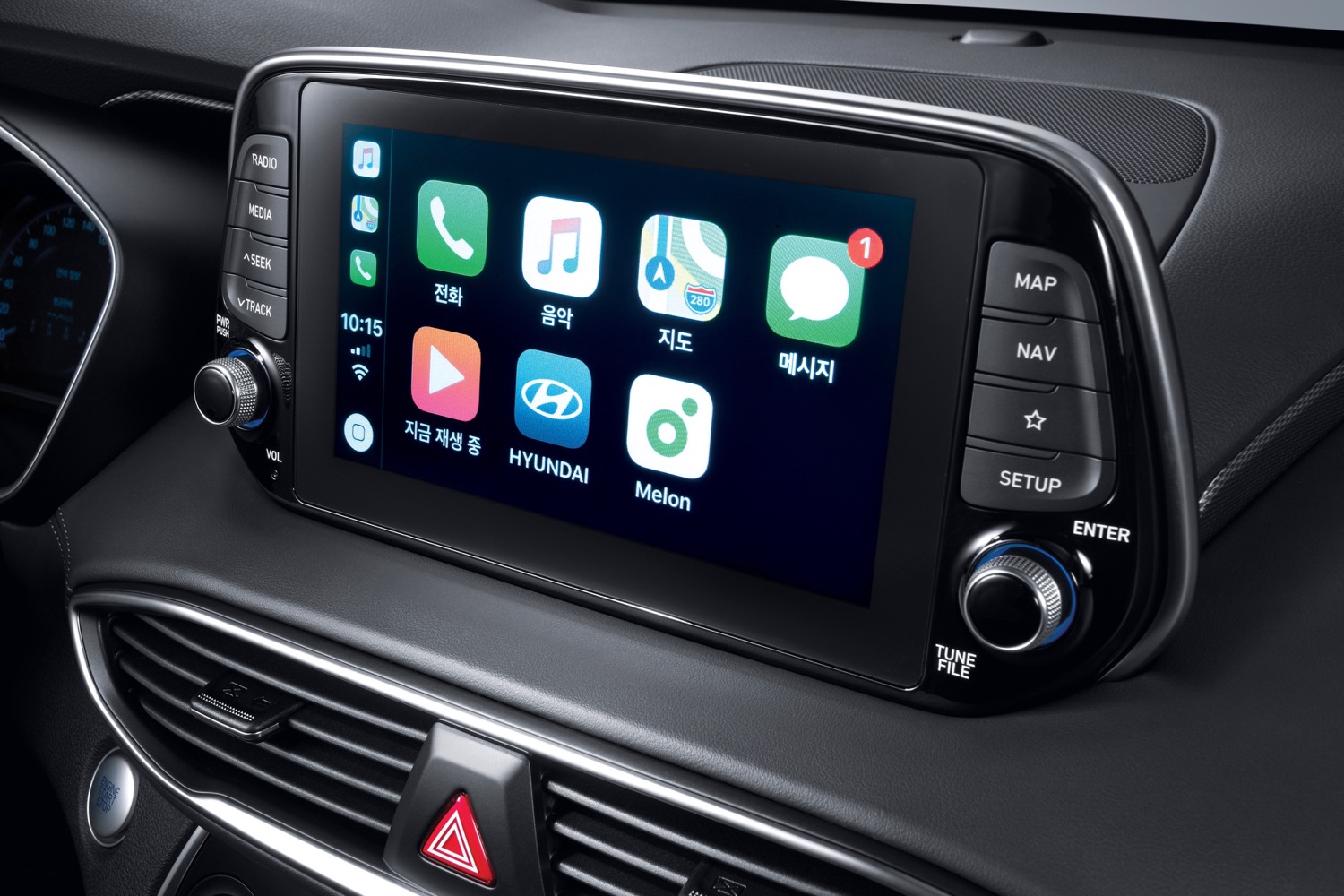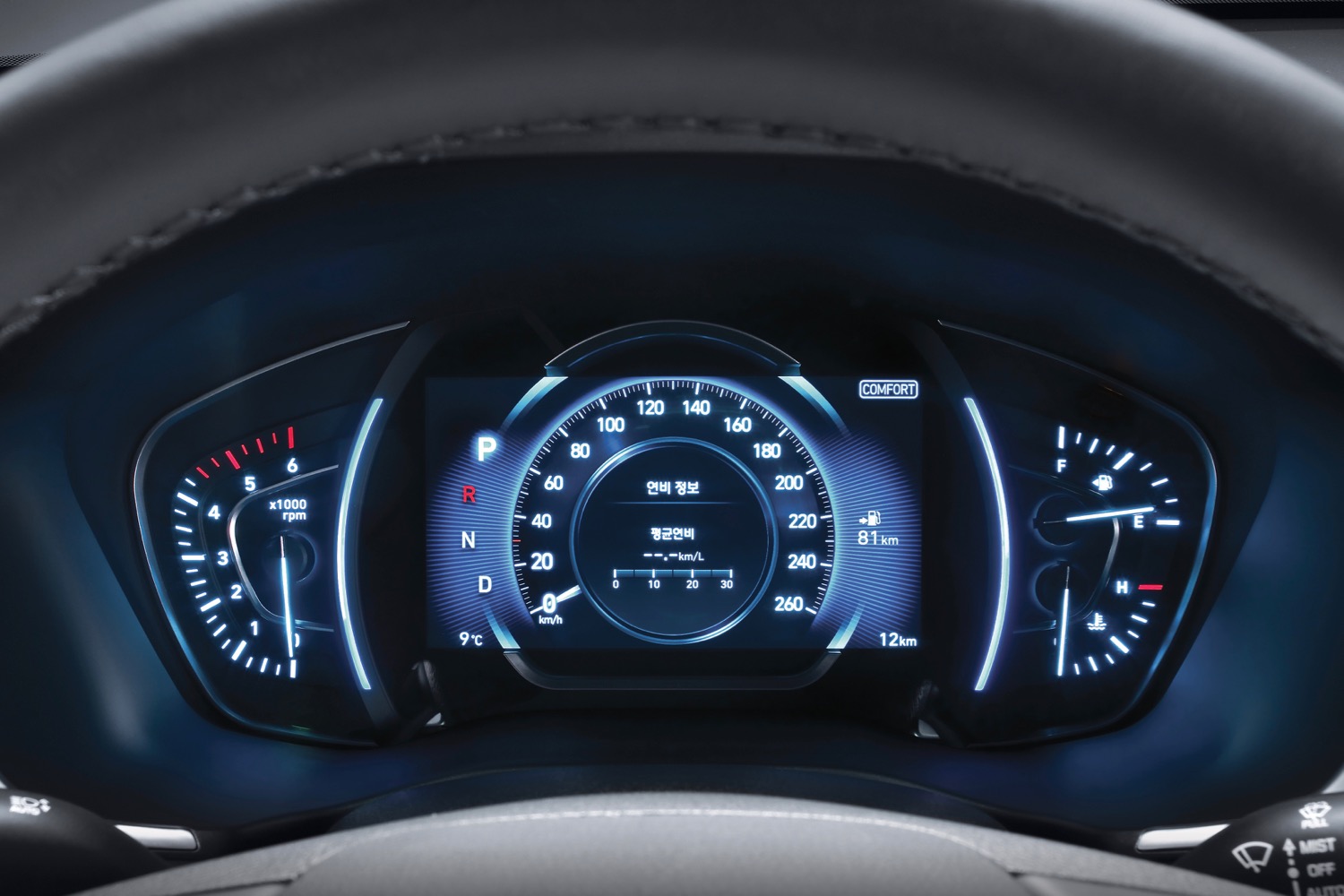It may not be autonomous or powered by fuel cells like the new Hyundai Nexo, but the 2019 Hyundai Santa Fe is the type of vehicle most people will drive until those technologies improve. Hyundai’s largest SUV gets a complete redesign for the 2019 model year, and we’ve got the first details right here.
The current-generation Santa Fe is fairly plain-looking, and Hyundai wants the new model to stand out a bit more. The 2019 Santa Fe borrows the grille and other styling details from the smaller Hyundai Kona, for a look that’s definitely distinctive, but not handsome. Hyundai currently offers three-row, seven-seat Santa Fe and two-row, five-seat Santa Fe Sport models. But for 2019, the five-seat version be called Santa Fe, and the seven-seat version will be renamed Santa Fe XL. Hyundai is also planning a new eight-seat SUV that will surpass the Santa Fe/Santa Fe XL in size.
Continuing to distance itself from its old reputation as a bargain brand, Hyundai said the 2019 Santa Fe’s interior will have a more premium feel. Higher trim levels get leather upholstery with contrast stitching, which is how automakers show that they’ve spent money on interior quality. The 2019 Santa Fe also has a longer wheelbase than its predecessor, which should translate to more interior space. But we’ll have to get some actual seat time in a Santa Fe to see if it measures up to Hyundai’s claims.
The interior design looks fairly clean, with the requisite touchscreen perched atop the dashboard so as not to clutter its lines. The 7.0-inch touchscreen infotainment system supports Apple CarPlay and Android Auto. Qi wireless phone charging, a head-up display, and a 12-speaker Infinity audio system that adjusts volume based on vehicle speed will be available as well.
Despite the Volkswagen scandal, Hyundai is adding a diesel engine option to the Santa Fe for the first time in the U.S. The 2.2-liter turbocharged inline-four makes 200 horsepower and 300 pound-feet of torque. Hyundai will also offer two gasoline engines: a 185-hp 2.4-liter four-cylinder, and a 2.0-liter turbocharged four-cylinder that makes 232 hp. All engines are mated to an eight-speed automatic transmission, with standard front-wheel drive or optional all-wheel drive.
Hyundai will add two new safety features, both dealing with what’s behind the car. A rear cross-traffic alert system scans the area astern when the driver is backing up, and automatically applies the brakes if it detects an oncoming vehicle. Safety Exit Assist locks the doors if occupants try to get out while a another vehicle is approaching from the rear. The full list of safety features will probably be much longer, as Hyundai needs to keep pace with the likes of Honda, Nissan, Toyota, and other competitors, many of which offer extensive suites of safety tech in their family SUVs.
We’ll have more details on the 2019 Hyundai Santa Fe when it makes its official debut at the 2018 Geneva Motor Show in March. A North American debut at the 2018 New York Auto Show will likely follow that.
Editors' Recommendations
- New Hyundai Ioniq electric vehicle gets big boosts in range and horsepower
- The 2020 Hyundai Venue is small, affordable, and brimming with value
